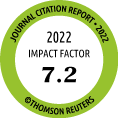Return to content in this issue
The Influence of BMI in Asthma: Which Traits Are due to Obesity and Which to the Asthma and Obesity Phenotype?
Esteban-Gorgojo I1, Gorgojo MP2, Sastre J3,4,5, García-Río F4,5,6,7, Quirce S4,5,7,8
1Department of Allergy, Hospital General de Villalba, Madrid, Spain
2CS Universitas, Zaragoza, Spain
3Department of Allergy, Fundación Jiménez Díaz, Madrid, Spain
4Department of Medicine, Universidad Autónoma de Madrid, Madrid, Spain
5CIBER of Respiratory Diseases (CIBERES), Instituto de Salud Carlos III, Madrid, Spain
6Department of Pulmonology, La Paz University Hospital, Madrid, Spain
7IdiPAZ, Madrid, Spain
8Department of Allergy, La Paz University Hospital, Madrid, Spain
J Investig Allergol Clin Immunol 2024; Vol 34(1)
: 30-37
doi: 10.18176/jiaci.0865
Background: The characteristics of the asthma and obesity phenotype have been described in cluster studies but have not been subsequently confirmed. Specific characteristics of this phenotype have not been differentiated from those inherent to the patient’s body mass index (BMI).
Objectives: This study aims to assess the effect of BMI on asthma in order to identify which traits could define the asthma and obesity phenotype and which are inherent to the patient's BMI.
Methods: A real-life retrospective observational study was conducted based on data from 2514 patients with suspected asthma collected at the first visit to the allergy clinic between November 2014 and November 2017. All patients had to perform an appropriate spirometry maneuver. All BMI, sex, and age groups were represented.
Results: The influence of BMI on asthma differed according to age group and sex. All spirometry results and FeNO were influenced by BMI. The only notable asthma characteristics were later onset of asthma with higher BMI values. No other differences were found between the BMI groups.
Conclusions: The effect of BMI on asthma is age-dependent; therefore, it should be corrected for age. The most important variations are in FeNO and spirometry results. The specific characteristics of the asthma and obesity phenotype are a greater perception of symptoms with fewer alterations in respiratory function tests and a lower prevalence of atopy, rhinitis, and allergy, including allergic asthma. Other characteristics of this phenotype, such as a higher female prevalence or late-onset or noneosinophilic asthma, are nonspecific for this phenotype.
Key words: Asthma, Obesity, BMI, Phenotype, Severe asthma, Asthma and obesity
| Title | Type | Size | |
|---|---|---|---|
 |
doi10.18176_jiaci.0865_supplemental-materials_1.pdf | 357.67 Kb |



